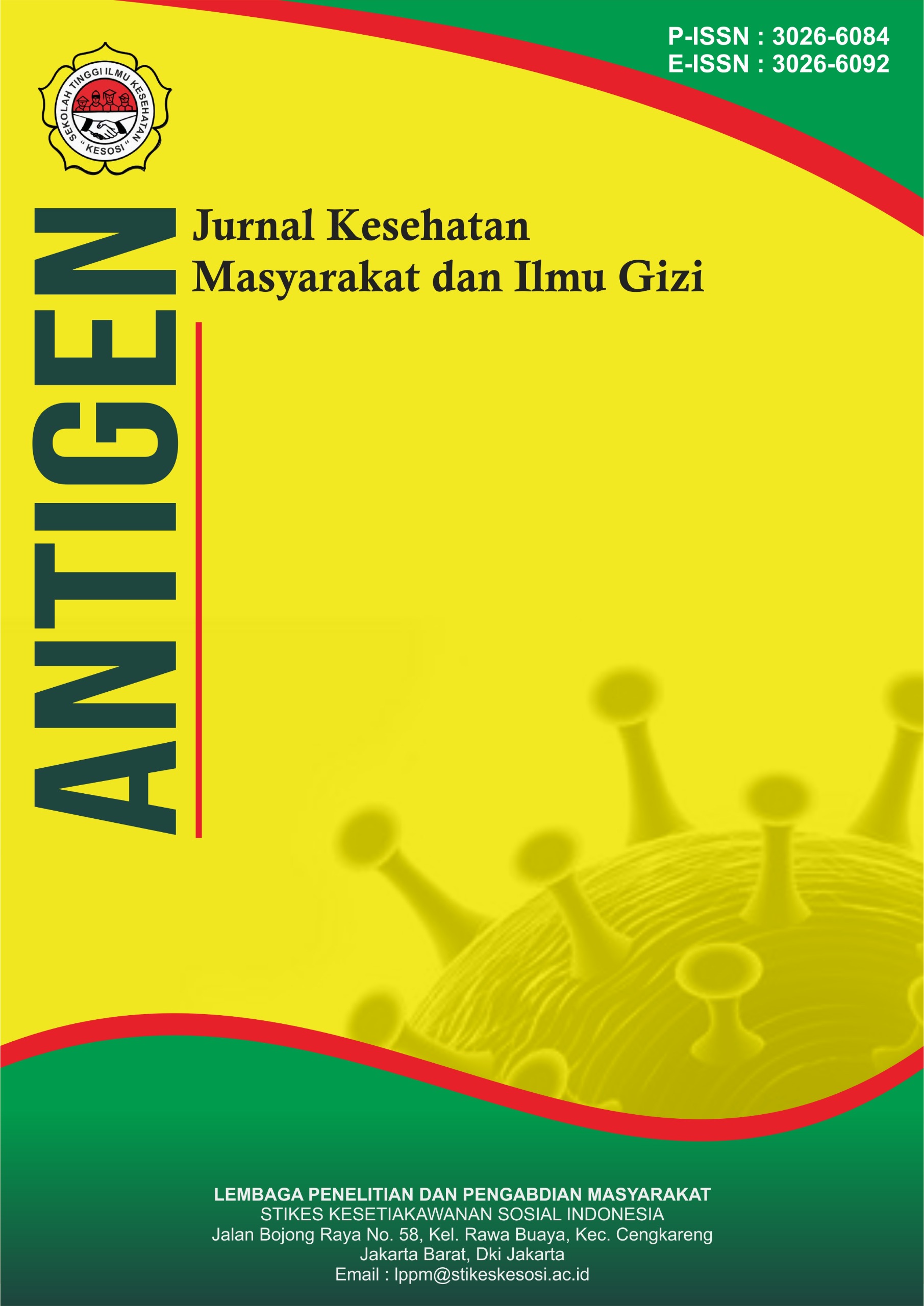Kajian Arang Aktif Sekam Padi Untuk Penurunan Kandungan Fe Di Lokasi Masyarakat Skala Rumah Tangga
DOI:
https://doi.org/10.57213/antigen.v2i3.271Keywords:
Water quality, Activated carbon, Rice husk, Absorption, Iron concentrationAbstract
To improve water quality, rice husks are soaked in activated carbon to treat water. This activated carbon works through an absorption mechanism. This study tested the effectiveness of rice husk activated carbon in reducing iron concentration. Water is an element of the environment that is very important for human life and is used for various purposes, including household, industrial, and agricultural purposes. The quality of water used must meet physical, chemical and biological requirements. Many materials can be used and processed into activated charcoal, in this study, researchers used rice husk activated charcoal, where rice husk is very abundant and abundant so it is easy to obtain. The results of the study, the iron content in water experienced the greatest decrease of 0.06 mg/L after soaking for 120 minutes, followed by a decrease of 1.78 mg/L (96%), thus making the iron content in water below the specified value. Thus, rice husk activated carbon effectively reduces iron content in water.Thus, it can be confirmed that activated charcoal from rice husks is effective in reducing iron levels in water.
References
Apriyani, N., & Novrianti, N. (2020). Use of activated charcoal and unactivated zeolite in laundry wastewater filter. Jukung (Journal of Environmental Engineering), 6(1), 66-76.
Athinarayanan, J., et al. (2014). Sintesis nanopartikel silika biogenik dari sekam padi untuk aplikasi biomedis. Keramik Internasional, 41, 275-282.
Beenakumari, K. S. (2009). Removal of iron from water using modified coconut shell charcoal as adsorbent. Curr World Environ, 4(2).
Budi, E. (2011). Review of the formation process and use of coconut shell charcoal as fuel. Journal of Science Research, 14(4), 168081.
Budi, E., Nasbey, H., Budi, S., Handoko, E., Suharmanto, P., Sinansari, R., Physics, J., & Chemistry Faculty of Mathematics and Natural Sciences, J. (2012).
Caroline, J., Putra, K. H., & Tavares, M. E. D. C. (2017). Seawater treatment using activated charcoal from mangrove roots. National Seminar of Applied Science and Technology V, 5(1).
Das, A. K., Islam, M. N., Faruk, M. O., Ashaduzzaman, M., & Dungani, R. (2020). Tinjauan tentang tanin: Proses ekstraksi, aplikasi dan kemungkinan. Jurnal Botani Afrika Selatan, 135(58-70).
Department, M., Sipl, T., Engineering, F., & Yogyakarta, U. M. (n.d.). 1 2, 3, 4. Ministry of Health of the Republic of Indonesia, 1-10.
Elfrida, D. (n.d.). Salinity reduction of brackish water using activated zeolite and activated charcoal media filters.
Elma, M., Rahma, A., Pratiwi, A. E., Zainuddin, M., Munandar, E., & Zaini, L. (2020). The effect of the thickness of zeolite as a layer in the filtration process for wetland saline water, 2, 82-86.
Eri, I. R., & Hadi, W. (2010). Study of peat water treatment into clean water with a combination of upflow anaerobic filter and slow sand filter process. Department of Environmental Engineering FTSP-ITS, 416, 1-11.
Irnaningsih. (2015). Desalination of seawater using hydrochloric acid (HCl) activated zeolite in Puntondo, Takalar Regency with ion exchange column method. Journal of Environmental Science & Technology, 11(2), 122-131.
Jasman. (2011). Trial of rice husk charcoal as filtration media in reducing Fe level in boring well water in Manado Environmental Health Dormitory. Department of Environmental Health Kemenkes Manado, 49-53.
Ministry of Health of the Republic of Indonesia. (1990). Permenkes No. 416 Year 1990 Conditions and studies on the formation of activated charcoal made from coconut shell charcoal. National Seminar on Physics, 62-66.
Mujianti, D. R., & Ariyani, D. (2020). Final research report of the compulsory research lecturer program. Study of silica content of various local rice varieties in South Kalimantan. ULM Lecturer Rejo.
Nur Ai'ni, S., Triyantoro, B., & Abdullah, S. (2020). Effect of heavy varieties of rice husk charcoal as adsorbent media in reducing iron (Fe) levels in water in Banyumas. Buletin Keslingmas, 39(1), 31-39.
Pangesti, M. I., Dwityaningsih, R., & Satriawan, D. (2022). Effectiveness of activated carbon from rice husk with H3PO4 activator as filter media for CO2 capture from biogas. Study Program D4 Environmental Pollution Control Engineering, Cilacap State Polytechnic, 100-107.
Putri, W., & Musfirah. (2019). Effectiveness of mangrove wood activated charcoal on reducing iron metal (Fe) levels in dug well water. Publication Manuscript.
Riskawati, Rahmi Amir, & Muin, H. (2019). Effectiveness of rice husk charcoal in reducing iron (Fe) levels in boring well water in Padangloang Village, Pinrang Regency. 156-163.
Ronny, Ahmad Arzyl Alfajri. (2021). Effect of rice husk charcoal and corn cob charcoal as media in reducing iron (Fe) in dug well water. Environmental Sanitation Study Program, Poltekkes Kemenkes Makasar, 291-301.
Saputra, N. A., Handayani, N., Kamaliah, & Muhammadiyah, M. (2022). Preparation of activated carbon from shell waste as a water filtration media. Journal of Amaliah, 178-183.
Downloads
Published
Issue
Section
License
Copyright (c) 2024 Antigen : Jurnal Kesehatan Masyarakat dan Ilmu Gizi

This work is licensed under a Creative Commons Attribution-ShareAlike 4.0 International License.






